A group of students from ArtFX School of Digital Arts in France took home the Autodesk-sponsored award for Outstanding Visual Effects in a Student Project during the annual Visual Effects Society (VES) Awards recognizing outstanding VFX in film, television, and other media. The students were recognized for their 2023 graduation project, a short film called “Silhouette.” For the past 16 years, Autodesk has sponsored the student project award during the VES Awards, which recognize outstanding professional work in a range of categories.
What do we think? It seems that each year, students are raising the bar in their submissions as they compete for this award. If the work of these student winners and runners-up are any indication, we have a lot of amazing work to look forward to in the years to come.
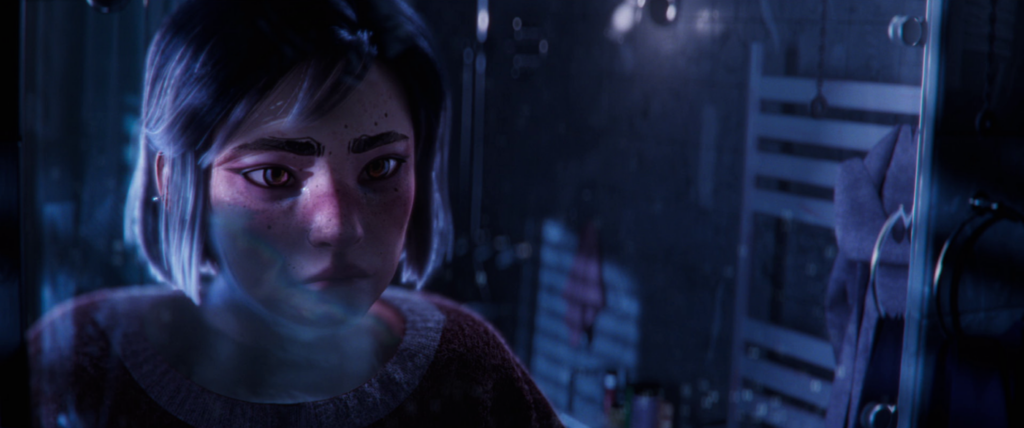
‘Silhouette’ wins best student film honor at VES Awards
Receiving awards and accolades for a project you put your heart and soul into can be validating and uplifting. Let’s face it, who doesn’t like a very public pat on the back and an atta boy for your hard work. That is why awards shows and presentations like the Oscars, BAFTAs, and others are so important to those in Hollywood. It also helps push your industry recognition by boosting your résumé and even your paycheck for that next job. As Sally Fields had said during her 1985 Oscar speech, “I can’t deny the fact that you like me, right now, you like me!” Yes, even megawatt stars need and appreciate praise for their work every now and then, especially from their peers.
So, think about what an important industry award like those means to a student who is getting ready to embark on his or her career. Indescribable.
For 22 years now, the Visual Effects Society (VES) has recognized the outstanding work of those artists with a starring role in a production, albeit one behind the camera. Voted on by their industry peers, these awards are for the visual artists and producers whose innovations and artistry have dazzled us, whether in film, television, commercials, real-time projects, or special-venue work. Besides recognition for best character, best environment, and so forth, an award is also given for best student project, honoring those student creators in front of soon-to-be peers who are at the top of their game.
For the 16th consecutive year, Autodesk has sponsored this award for Outstanding Visual Effects in a Student Project, which this year was given to a group of student filmmakers from ArtFX School of Digital Arts in France for their short film “Silhouette.”
“Silhouette” is a graduation project by Alexis Lafuente (animation, rigging), Antoni Nicolaï (animation), Chloé Stricher (modeling, texturing, lookdev, grooming, CFX), Elliot Dreuille (environment, lighting, composition), Baptiste Gueusquin (environment TD, pipeline, lighting, compositing, effects), and Marc Forest (animation, DMP, previs) from the class of 2023.
Autodesk’s Maya was used for modeling, rigging, and animation, with the open-source mGear plug-in to Maya used in the rigging process. Other software that was used includes: Nuke, Marvelous Designer, EbSynth, Houdini, Photoshop, Blender, Krita, V-Ray, Substance Painter, ZBrush, and DaVinci Resolve.
The animated short follows Claire, a young woman who has just moved to a big city. Amid this cold, unwelcoming setting, she finds herself literally disappearing—her body begins to fade away—as she feels more and more isolated and lonely, thus giving a visual interpretation to her emotions and feelings. She regains her feeling of self again after finally meeting a friend.
The artists say they were inspired by the work of Alberto Mielgo (Spider-Man: Into the Spider-Verse; Love, Death & Robots), who uses a mix of 3D animation with 2D graphics in his work. They were especially intrigued by how much the camera work contributed to the realism of his scenes, says Forest. As such, the students spent a good deal of time in preproduction refining the camera work on each shot in their own film.
“Silhouette” has a stylized look, with a strong focus on character design. Claire’s hair was generated in Houdini, but for the scenes in which she is caught in the rain, the artists were challenged when creating a wet version as well as the non-wet style. Meanwhile, for the background characters in the city crowds, the artists filmed real people on greenscreen and used the AI-powered EbSynth to interpolate the captured footage and transform it into a stylized look by painting over single frames. According to Gueusquin, he then used AI for lighting and shadow interaction in the environments. Further animation was done in Blender with its real-time render engine Eevee. Then, the group added a layer of realistic motion to the camera in their Maya scenes.
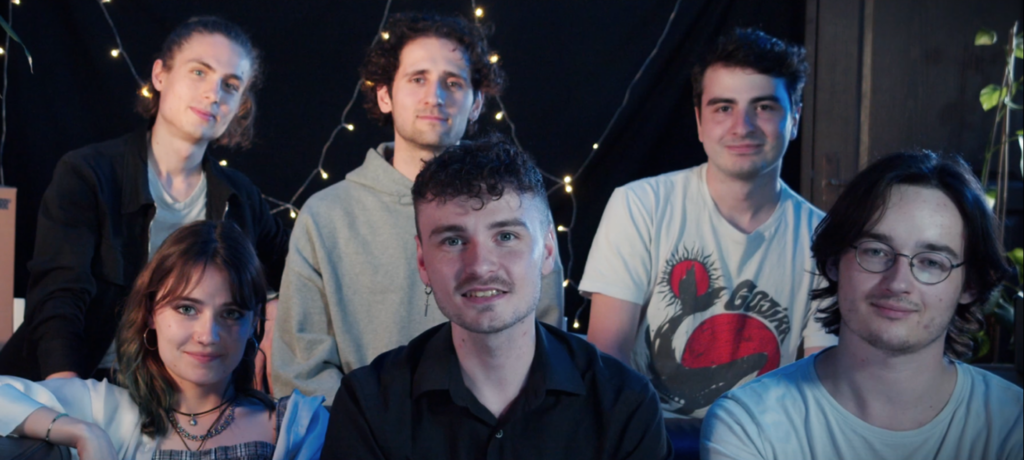
Like the winner, other nominees in the student category come from schools in France. These projects include:
“Au 8éme Jour,” a wonderful thread of a story, is a vibrant reflection on the world and its creatures, showcasing how quickly its balance can be disrupted and unraveled. As its description states, “It took seven days to create the world, it only took one to disrupt its balance.”
The short film features a tactile aesthetic, from the animals to the sets fabricated out of cloth, thread, quilt, and yarn. Camels migrate across a blanket desert, birds fly through skies of intermingling yarn, and orangutans walk in fields of colorful flowers. The modeling, rigging, and animation was completed in Maya and rendered in Arnold.
“Au 8éme Jour” was created by fifth-year students Flavie Carin, Agathe Sénéchal, Alicia Massez, and Elise Debruyne from Piktura in France.
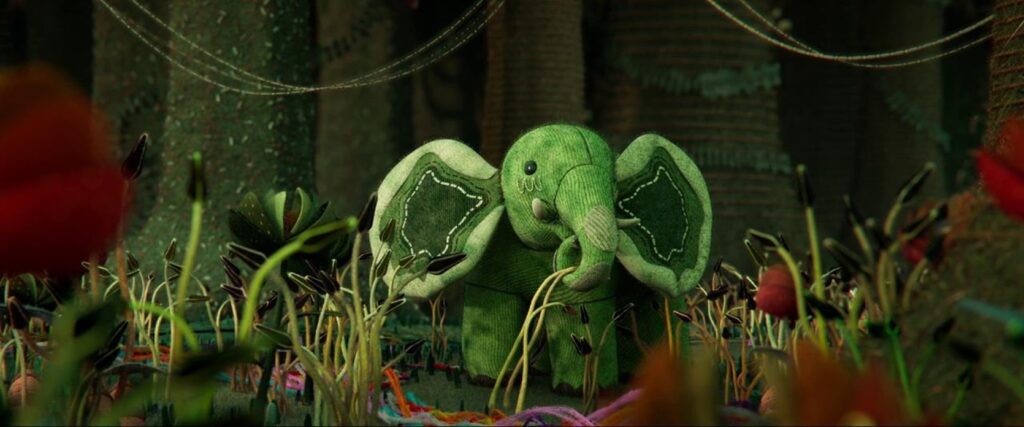
In a similarly themed short warning against the destruction of nature and its delicate resources, the whimsical “L’Animal Sauce Ail” uses a very different aesthetic to tell the story of the inhabitants of a small village who hunt, consume, and overexploit natural resources and creatures. “The inhabitants of this small village, rich in long-necked fowl, overexploit every new species, from geese to tadpoles and frogs. Each new management of their environment and their consumption is told through television broadcasts, each more cobbled-together than the last,” its description reads.
The lighthearted short with an important message was created using Maya for asset modeling, rigging, and animation, and was rendered in Arnold.
The 3D-animated “L’Animal Sauce Ail” is an original production from fifth-year Supinfocom Rubika (France) students Aurélien Duchez, Ysaline Debut, Diane Mazella, and Camille Rostan (class of 2022–2023).
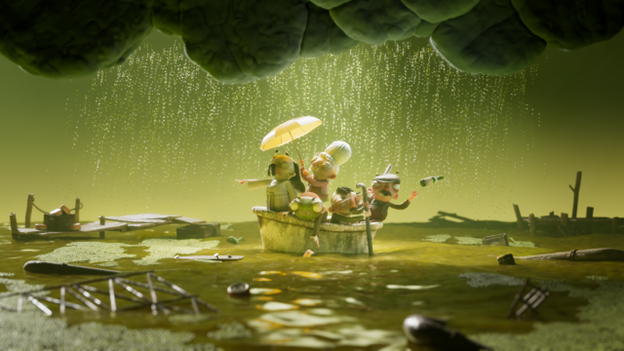
“Loup y es-tu?” tells the melancholy tale of Mischa, a little girl living on the outskirts of Moscow, who has just made a wonderful papier-mâché violin. She wants to play it for the big monsters who live in her apartment, but the less they listen to her, the more the wolf prowls dangerously close to her.
According to Autodesk, the paper-textured, handmade look of this world was created with Maya for set dressing, lighting, and shading, and Arnold for final rendering.
“Loup y es-tu?” was crafted by the team of Célina Lebon, Louise Laurent, Emma Fessart, and Annouck François, fifth-year students at Supinfocom Rubika (class of 2022–2023) in France.
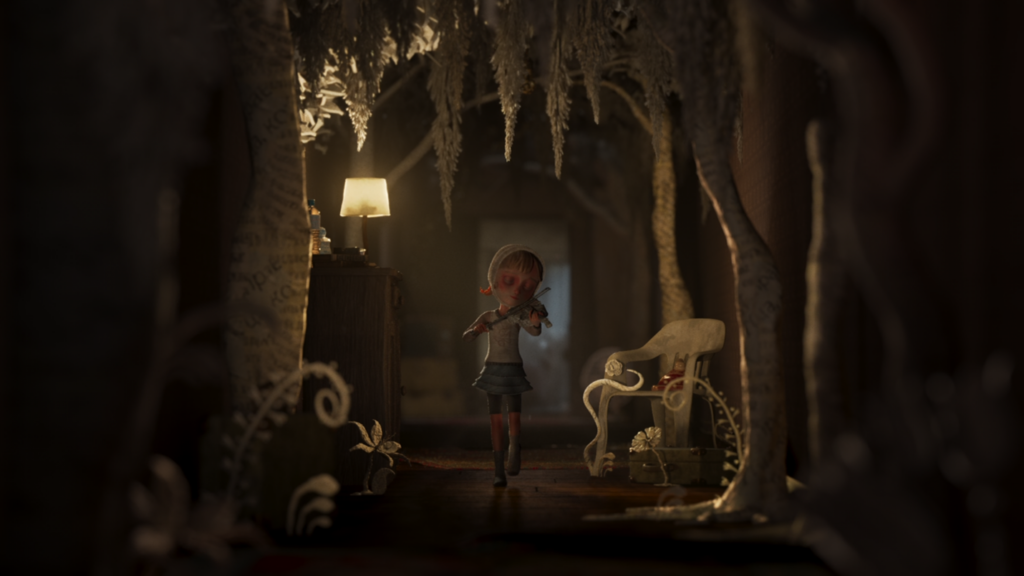
“I’m inspired by the depth and breadth of student talent we’re seeing in this year’s thoughtful storytelling, character development, and visual effects,” said Leona Frank, Autodesk’s director of Media & Entertainment marketing. “It’s an incredibly talented and creative group of artists entering the field.”